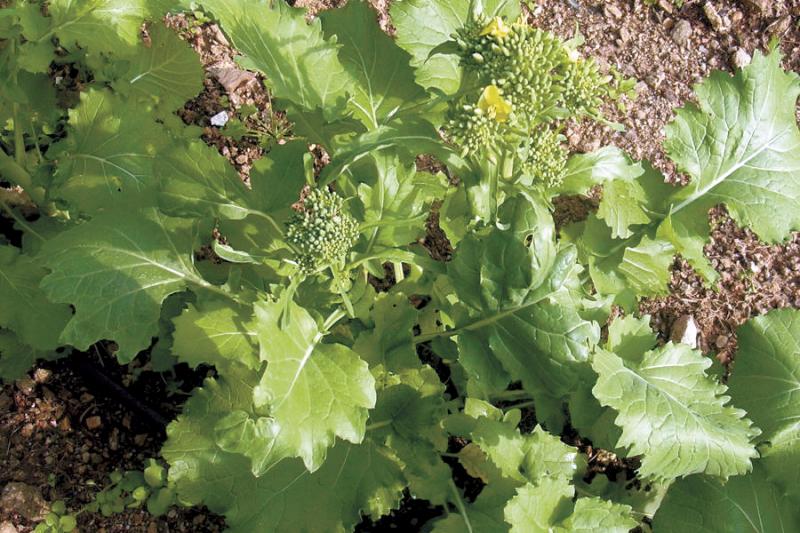Rapini is the diminutive of turnpi, and is also called broccoli rabe
To listen for distant hoofbeats Indians taught pioneers to put their ears to the ground, and put your ear to the ground still means be aware of what is happening immediately. So listen up, or be “all ears” for your August garden.
Ears also play into one of the most delicious Italian dishes. In southern Italy there is a traditional dish, orecchiette alle cime di rapa, which means rapini with pasta ears. The small orecchiette pasta is so called because it is shaped like a small ear. The rapini is the diminutive of turnpi, and is also called broccoli rabe, broccoletti, broccoletto, cime di rapa and friarielli in Naples.
Rapini buds look like small broccoli shoots, but don't form heads. You eat not just the buds, but the stems and leaves, all which have a strong but delicious nutty flavor with a slightly bitter taste.
While late summer is when many gardens have produce coming out of your ears, you can now plant a fall crop of this tasty, nutritious Italian specialty.
Rapini (Brassica rapa) like all green cruciferous veggies contains powerful cancer fighting phytochemicals that prevent damage to cells caused by free radicals. Rapini keeps a healthy hormonal balance, and even reduces yeast infections, with one Japanese study showing that this type of food killed Candida albicans, the yeast strain that often takes over when taking antibiotics.
Rapini has lots of vitamin K that helps keep bones from thinning. With its strong anti-inflammatory nutrients such as folate and vitamin C it helps ward off artery damage and heart disease.
Cruciferous vegetables such as rapini contain sulfur that may help liver detoxification and reduce inflammation from arthritis. Because rapini is high in soluble fiber, this slows down transit and digestion time in the GI tract, and lowers blood cholesterol and glucose levels. By combining rapini with a high- carbohydrate meal such as the famous orecchiette with rapini pasta dish reduces the insulin response, preventing both hyperglycemia and hypoglycemia.
Plant the fine seeds a half inch deep, two to four inches apart in rows 12 to 18 inches apart. Since you will be eating the greens you can encourage leaf and stem growth with a high nitrogen fertilizer, though it will do well in average soil. It prefers a soil pH above 6.0. Seeds are available from mail-order companies such as Baker Creek (www.rareseeds.com) or Seeds from Italy (www.growitalian.com).
Once the plants are up and growing you can thin them to give each plant more room. The tiny plants you pull up when thinning will be tender and delicious.
Rapini does well when planted among beets, cilantro, carrots, dill, lettuce, onion, nasturtium and spinach. It doesn’t do well near strawberries, beans or tomatoes.
Along with using rapini as cooking greens you can grill it, steam it or sautee in olive oil and garlic.
Cut rapini just before the flowerbuds begin to open.
To save your own rapini seed simply let a few plants bloom and go to seed. To prevent cross pollination with broccoli or cauliflower you can bag the entire plant in fine netting.
Let the seed pods dry on the plant, then break the pods apart and store the seeds in a cool, dry place. Your seeds should be good for up to five years.
Plant rapini now and in just 40 days you can harvest fresh, delicious greens for grilling or to make orecchiette with rapini. Just hearing about this dish will make you grin from ear to ear.



















































